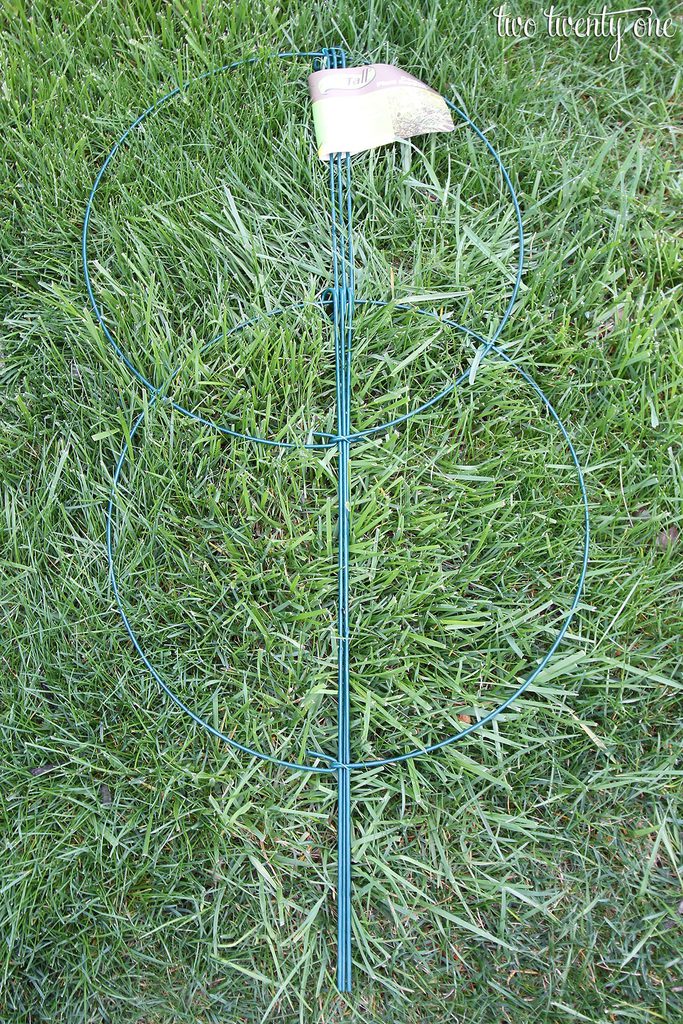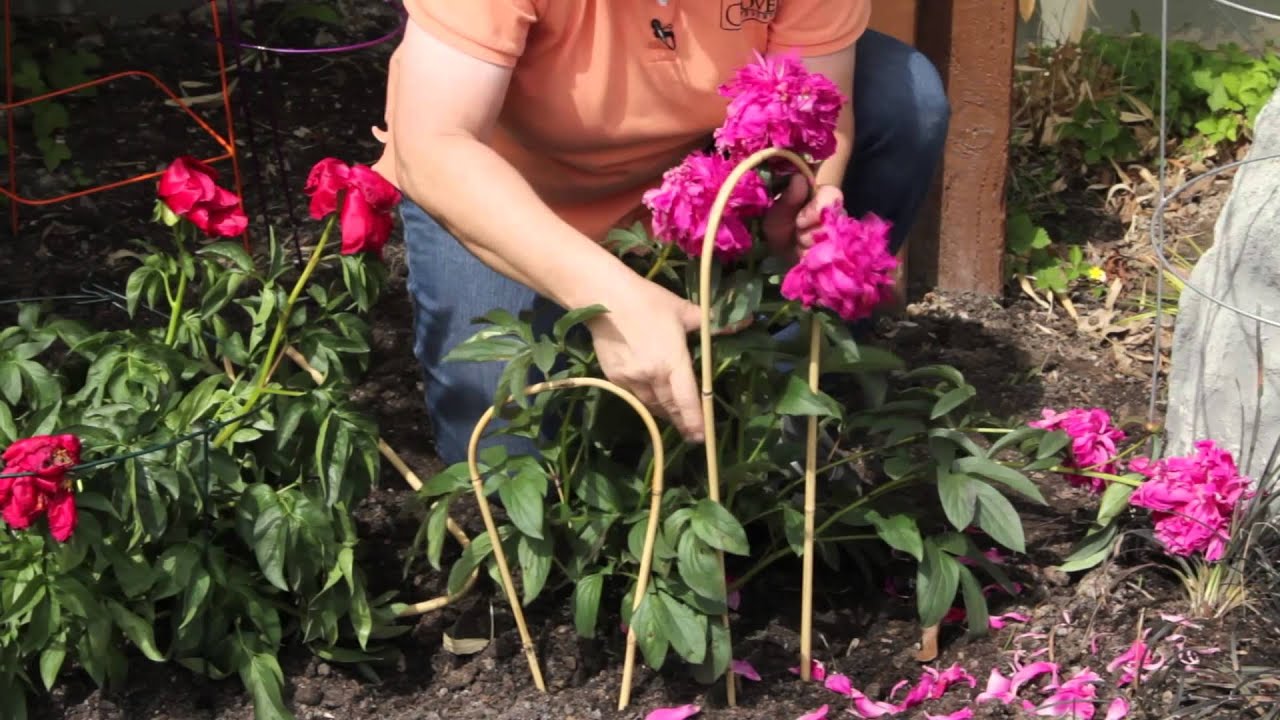Are you having trouble keeping your pretty peonies from drooping or lying flat on the ground? This article will show you how to do it no matter what size or species of peony you have.
Peonies are prized for their huge, fragrant blooms in late spring. But the profusion of flowers on some varieties can often cause flopping and top-heaviness. Properly propping up peonies ensures the blooms stay upright and on display rather than face down on the ground.
Follow these tips for keeping your peony bushes supported and flowering beautifully
Set Up Supports Early
Don’t wait until peonies start flopping to put up supports. Set up a support system for each plant in early spring before rapid growth begins. This prevents damage to emerging shoots and stems.
The best time is when peony sprouts are 4-6 inches tall. Supports can be left in place year after year.
Use Sturdy Single or Double Rings
Commercial peony rings made of strong wire or metal are the best option for supporting peonies Single rings are sufficient for most plants Very floriferous, top-heavy varieties may need a double ring for maximum stability.
Push the support rings 6-12 inches into the ground around the peony clump. The ring should encircle the entire plant without cutting into stems.
Bamboo, Twine, and Tomatoe Cages Also Work
If peony rings are not available, bamboo stakes, garden twine, or stiff wire tomato cages can also work to prop up peonies. Use at least 3-4 stakes or make a triangular cage around plants.
Crisscross twine in a diamond pattern between the stakes to create a mesh support. Keep twine loose enough to allow emerging shoots room.
Use Proper Staking Techniques
When using bamboo stakes and garden twine to support peonies:
-
Place stakes 6-12 inches from the plant, angled slightly outward. Use at least 3 stakes per plant.
-
Secure stakes 1-2 inches deep in the ground to anchor them.
-
Start criss-crossing twine when shoots are 4-6 inches tall. Wrap it loosely so stems have room to grow.
-
Tie twine securely to each stake to keep the support structure rigid.
-
Add more twine criss-crosses as stems lengthen. Aim for 4-6 inch diamond gaps.
Try Peony Cages for Single Plants
Decorative peony cages made of metal provide interest and support. Place the cage ring over the peony clump and push the legs into the soil 6-12 inches to stabilize it. No staking required!
For large, heavily flowering bushes, use double peony cages, one inside the other. Or place short posts under a standard cage for added support.
Add Supplemental Stakes If Needed
Even with rings or cages, some top-heavy peonies may need extra help. Insert 1-2 sturdy stakes on either side of exceptional large blooms to prevent flopping.
Use soft plant ties or twist ties to gently secure heavy flower heads to the stakes. Avoid damaging the stem.
Monitor Support Systems
Check peony supports regularly once plants start actively growing and flowering. Add additional rings, stakes, or twine as needed to accommodate growth.
Plants can outgrow supports quickly in peak growth periods. Reinforce wobbly supports to keep peonies upright.
Remove Supports Seasonally or Annually
Peony supports can be removed each year after bloom is finished, or left in place for multiple seasons.
To remove just for winter, gently lift up supports in fall after plants die back. Store rings and stakes for reuse next spring.
If leaving supports over winter, check that they are not cutting into stems as growth resumes in spring.
Proper Pruning Improves Air Circulation
While supports keep peonies upright, proper pruning is also key to prevent flopping. Pruning improves air circulation and light penetration to minimize disease.
In fall, cut back stems to 6 inches above ground level. Remove excess debris and thin congested clumps. Discard diseased stems.
Pruning reduces the leverage weighing down mature plants. Combine with supports for best results.
Know Which Varieties May Need Supports
Some peony varieties are much more prone to flopping and need proactive staking:
-
‘Bartzella’ – Pale yellow double blooms are heavy
-
‘Bowl of Beauty’ – Japanese type has large, ruffled blooms
-
‘Coral Sunset’ – Profuse semi-double blooms
-
‘Felix Crousse’ – Huge, ruby red blooms
-
‘Karl Rosenfield’ – Bright red double blooms
-
‘Monsieur Jules Elie’ – Rose-pink blooms up to 8 inches wide
-
‘Sarah Bernhardt’ – Vibrant pink double blooms on weak stems
Keep these top-heavy varieties on your radar for proactive staking year after year.
Staking Peonies in Pots or Containers
Potted peonies often need extra support beyond the container sides. Insert 1-2 strong stakes next to the plant and gently tie stems to keep blooms upright.
Use soft plant ties to avoid damaging delicate blooms. Check ties frequently as stems grow and elongate.
Avoid These Common Mistakes
When supporting top-heavy peonies, be sure to avoid these common errors:
-
Waiting until after flopping occurs to add supports
-
Using flimsy, weak stakes that cannot hold up blooms
-
Allowing twine or ties to cut into tender stems
-
Failing to check supports and reinforce as needed
-
Not removing or loosening supports properly in fall
-
Forgetting to stake new plants or those previously staked
-
Staking too tightly, restricting growth and air flow
With proper preparation and diligent monitoring, you can keep even the most prolifically flowering peony standing tall. Follow these tips for showstopping blooms that don’t end up in the dirt!
Key Takeaways for Staking Peonies
-
Set up support rings or stakes in early spring before rapid growth
-
Use strong metal, wire, or bamboo supports 6-12 inches from plants
-
Add twine crisscrosses loosely as stems lengthen
-
Check supports frequently and reinforce wobbly parts
-
Remove supports seasonally or keep over winter
-
Combine with pruning for improved air circulation
-
Proactively stake known floppy varieties every year
-
Avoid waiting until after flopping or using flimsy stakes
-
Support potted peonies with sturdy stakes and soft ties
Keeping your peony blooms on display rather than on the ground is easy with proper preparation and care. Consistent staking allows you to enjoy these stunners at their best!
Where to Buy Peony Plant Supports
Peony cages are typically sold at garden or hardware stores, or you can buy them online.
When you buy a peony cage, you should think about how big your peonies are because they need a lot of room and air flow to grow.
The material your cage is made of is also important to think about. It should be strong enough to last the whole growing season and keep your flowers safe from harm.
How to Keep Peonies Upright
It’s important to give peony blooms some kind of structure or support around them because they do better when they are held up.
A hoop or stake with twine can help your peony plants stay upright as they grow and give them extra support.
While some people like to use wire tomato cages, I like to use peony cages to keep my peonies healthy.
Peony cages are used to provide support to the growing plants. This helps keep the plant’s flowers and foliage upright. The cage prevents them from collapsing under their own weight or becoming overwhelmed by strong winds.
The cage also lets air flow around the flower buds, which keeps them in perfect shape as they open up every spring.
It also keeps peonies safe from animals that might eat their petals, like deer and rabbits.
In some cases, a decorative peony cage can be used as part of the landscape design.
Peony grid cages are my preferred cages to buy. The center of the support circle contains grids that the peony blooms grow up through. This provides great support.

6 Ways to Support Flopping Peonies
- The Ultimate Guide to Growing Strawberries in Raised Beds - August 8, 2025
- No-Dig Garden Beds: The Easiest Way to Grow a Beautiful Garden - August 6, 2025
- How to Protect and Preserve Wood for Raised Garden Beds - August 6, 2025

